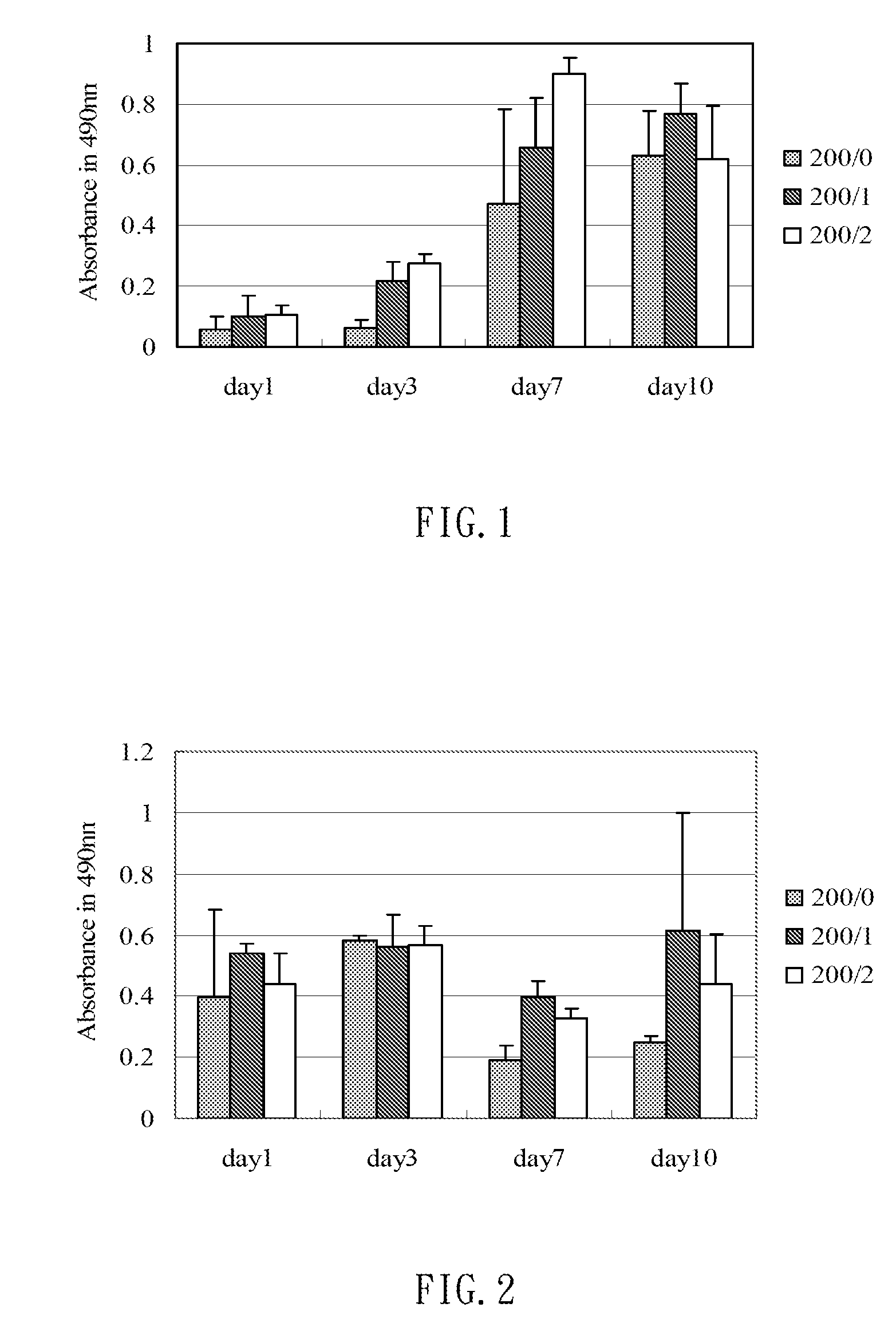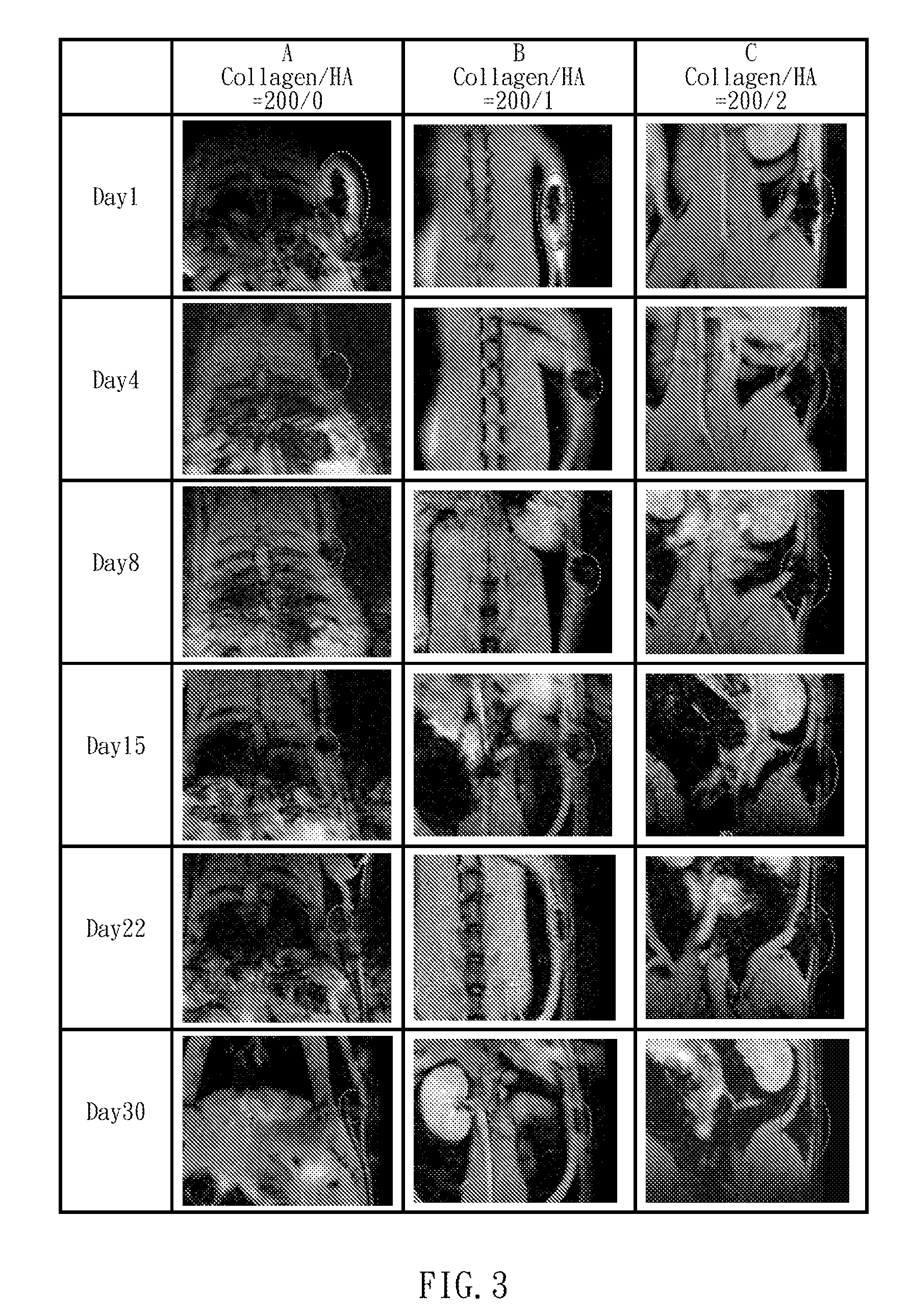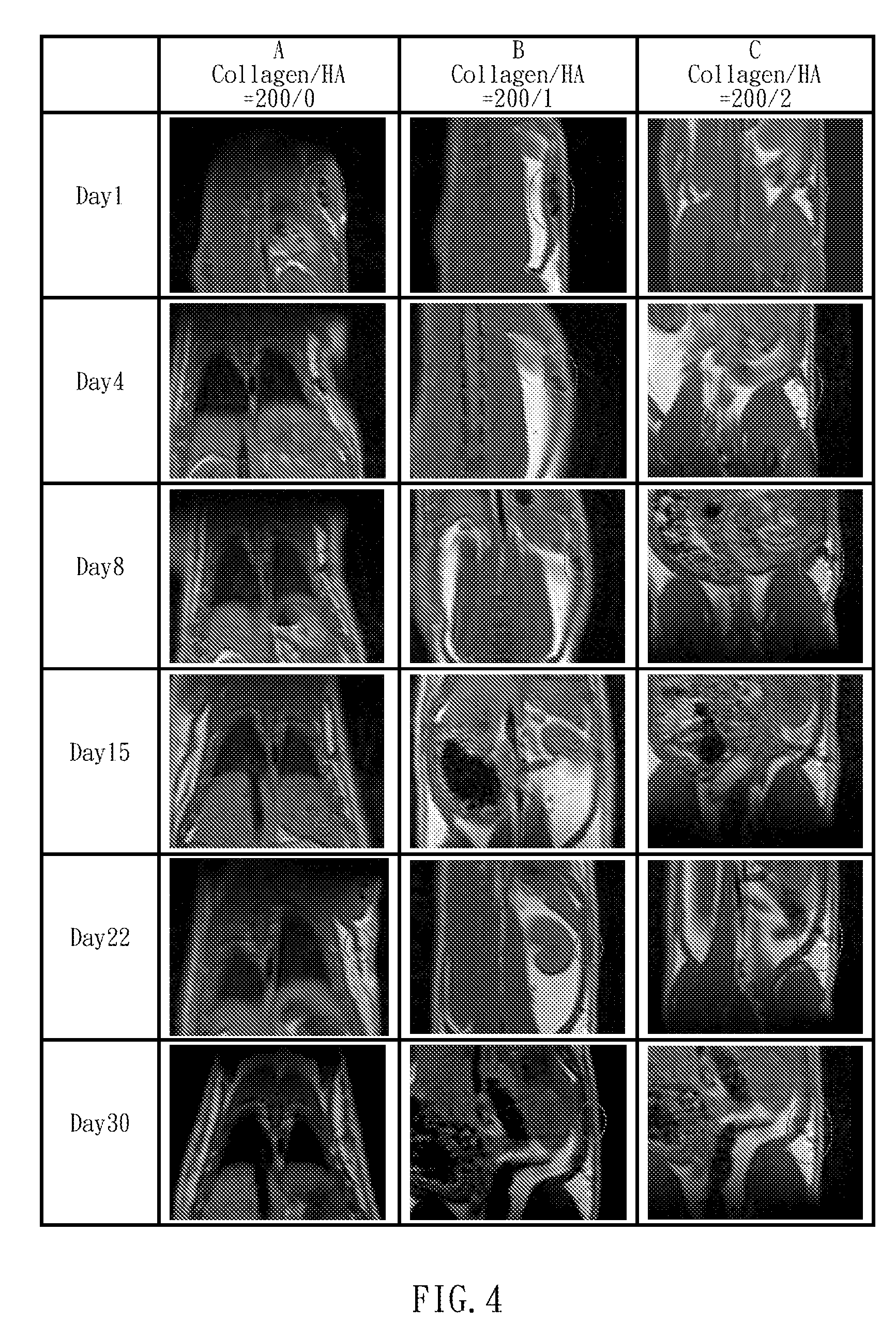Gel Scaffolds for Tissue Engineering
- Summary
- Abstract
- Description
- Claims
- Application Information
AI Technical Summary
Benefits of technology
Problems solved by technology
Method used
Image
Examples
example 1
[0024]This invention discloses the colloid scaffolds for tissue engineering, comprising collagen and hyaluronic acid (HA). The collagen and the hyaluronic acid (HA) are mixed to form colloidal suspension.
I. Collagen Preparation
[0025]1. Solution preparation[0026]A. Citric Acid buffer[0027]Mix 0.2M Sodium Citrate solution with o.2M Citric Acid solution and adjust the PH value to 4.5.[0028]B. Pepsin solution[0029]0.5M HCl / Pepsin=20 / 1 (w / w)
[0030]2. Cut off the fat, muscle or some connective tissue from the pigskin completely.
[0031]3. Mince the pigskin and put it in Acetone solution. Keep stirring in room temperature for 30 minutes to remove fat. (repeat this step twice)
[0032]4. Wash the minced pigskin with double distilled water and make sure there is no water soluble or non-collagen substance residue.
[0033]5. Immerse the minced pigskin in 10% NaCl solution. Stir in 4° C. for 24 hours to make it become swollen.
[0034]6. Wash the minced pigskin with double distilled water and make sure th...
PUM
| Property | Measurement | Unit |
|---|---|---|
| Structure | aaaaa | aaaaa |
| Viscosity | aaaaa | aaaaa |
| Ratio | aaaaa | aaaaa |
Abstract
Description
Claims
Application Information
 Login to View More
Login to View More - R&D
- Intellectual Property
- Life Sciences
- Materials
- Tech Scout
- Unparalleled Data Quality
- Higher Quality Content
- 60% Fewer Hallucinations
Browse by: Latest US Patents, China's latest patents, Technical Efficacy Thesaurus, Application Domain, Technology Topic, Popular Technical Reports.
© 2025 PatSnap. All rights reserved.Legal|Privacy policy|Modern Slavery Act Transparency Statement|Sitemap|About US| Contact US: help@patsnap.com



